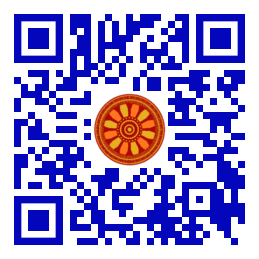
:: International Transaction Journal of Engineering, Management, & Applied Sciences & Technologies
http://TuEngr.com

ISSN 2228-9860
eISSN 1906-9642
CODEN: ITJEA8
FEATURE PEER-REVIEWED ARTICLE
Vol.13(9)(2022) |
Wind Load Combinations on Tall Buildings by High-Frequency Force Balance and High-Frequency Pressure Integration
 Wasin Thangthong,
Virote Boonyapinyo
(Department of Civil Engineering, Thammasat School of Engineering, Thammasat University, THAILAND),
Wasin Thangthong,
Virote Boonyapinyo
(Department of Civil Engineering, Thammasat School of Engineering, Thammasat University, THAILAND),
Jirawat Junruang (Department of Civil Engineering, Faculty of Engineering and Architecture, Rajamangala University of Technology Tawan-ok (Uthenthawai Campus), THAILAND).
Discipline: Civil Engineering & Technology (Structural Engineering).
doi: 10.14456/ITJEMAST.2022.173
Keywords: High-frequency force balance (HFFB); Pressure integration method; AIJ; Wind tunnel test; Modal correlation coefficients; HFPI Test; HFFB test; Wind load combination; Tall building modeling; Static wind load; Wind velocity profile; Spectrum of wind; Turbulence intensity profiles; Base Moment Analysis.
AbstractThis paper presents the analysis of the modal correlation coefficient and the weighting factor for predicting wind load combination in tall buildings under wind loads by high-frequency force balance (HFFB) and high-frequency pressure integration (HFPI) in a wind tunnel. The results of the analysis and comparisons in terms of non-dimensional aerodynamic coefficients and base moments will be presented in this study, to determine whether the pressure tap on the model surface for the HFPI test is sufficiently dense. Results show good agreement between HFFB and HFPI for overall wind loads, modal correlation coefficients and weighting factors. Wind load combinations are revisited in the framework of modeling the resultant base moments in each direction. According to the findings, the across-wind load combination by weighting factor is higher than the across-wind load combination by AIJ 2004 standard for the along-wind maximum case for buildings with an aspect ratio of 1.0. In other cases, the combination of wind loads as determined by AIJ 2004 is greater than the combination of wind loads determined by the weighting factor.Paper ID: 13A9E
Cite this article:
Thangthong, W., Boonyapinyo, V., and Junruang, J. (2022). Wind Load Combinations on Tall Buildings by High-Frequency Force Balance and High-Frequency Pressure Integration. International Transaction Journal of Engineering, Management, & Applied Sciences & Technologies, 13(9), 13A9E, 1-14. http://TUENGR.COM/V13/13A9E.pdf DOI: 10.14456/ITJEMAST.2022.173
References
- AIJ (2004). Recommendations for load on buildings. Architectural Institute of Japan, C6-63-65.
- Andrew Steckley, Marco Accardo, Scott L. Gamble and Peter A. Irwin. (1992). The Use of Integrated Pressure to Determine Overall Wind-induced Response. Journal of Wind Engineering and Industrial Aerodynamics, 1023-1034.
- Asami, Y. (2000). Combination method for wind loads on high-rise buildings. Proceeding 16th National Symp. On Wind Engineering. Japan Association for Wind Engineering JAWE, Tokyo, 531-534.
- Dae Kun Kwon, Seymour M.J. Spence and Ahsan Kareem. (2014). A Cyberbased Data-Enabled Design Framework for High-rise Buildings Driven by Synchronously Measured Surface Pressures. Advances in Engineering Software, 13-27.
- Dae-Kun Kwon, Tracy Kijewski-Correa and Ahsan Kareem. (2008). E-analysis of High-Rise Buildings Subjected to Wind Loads. Journal of Structural Engineering, 1139-1153.
- Xinzhong Chen and Ahsan Kareem. (2005a). Coupled dynamic analysis and equivalent static wind loads on buildings with three-dimensional modes. Journal of Engineering Mechanics, 1071-1082.
- Xinzhong Chen and Ahsan Kareem. (2005b). Dynamic Wind Effects on Buildings with 3D Coupled Modes. Journal of Engineering Mechanics, 1115-1125.
- Yin Zhou, Tracy Kijewski and Ahsan Kareem. (2003). Aerodynamic Loads on Tall Buildings: Interactive Database. Journal of Structural Engineering, 394-404.
- Yukio Tamura, Hirotoshi Kikuchi, and Kazuki Hibi. (2003). Quasi-static Wind Load Combinations for Low and Middle-rise Buildings. Journal Wind Engineering and Industrial Aerodynamics, 1613-1625.
- Yukio Tamura, Yong Chul Kim, Hirotoshi Kikuchi and Kazuki Hibi. (2013). Correlation and Combination of Wind Force Components and Response. Journal of Wind Engineering and Industrial Aerodynamics, 81-93.
Other issues:
Vol.13(8)(2022)
Vol.13(7)(2022)
Vol.13(6)(2022)
Archives
Call-for-Papers
Call-for-Scientific PapersCall-for-Research Papers: ITJEMAST invites you to submit high quality papers for full peer-review and possible publication in areas pertaining engineering, science, management and technology, especially interdisciplinary/cross-disciplinary/multidisciplinary subjects.
To publish your work in the next available issue, your manuscripts together with copyright transfer document signed by all authors can be submitted via email to Editor @ TuEngr.com (please see all detail from Instructions for Authors)
Publication and peer-reviewed process:
After the peer-review process, articles will be on-line published in the available next issue. However, the International Transaction Journal of Engineering, Management, & Applied Sciences & Technologies cannot guarantee the exact publication time as the process may take longer time, subject to peer-review approval and adjustment of the submitted articles.